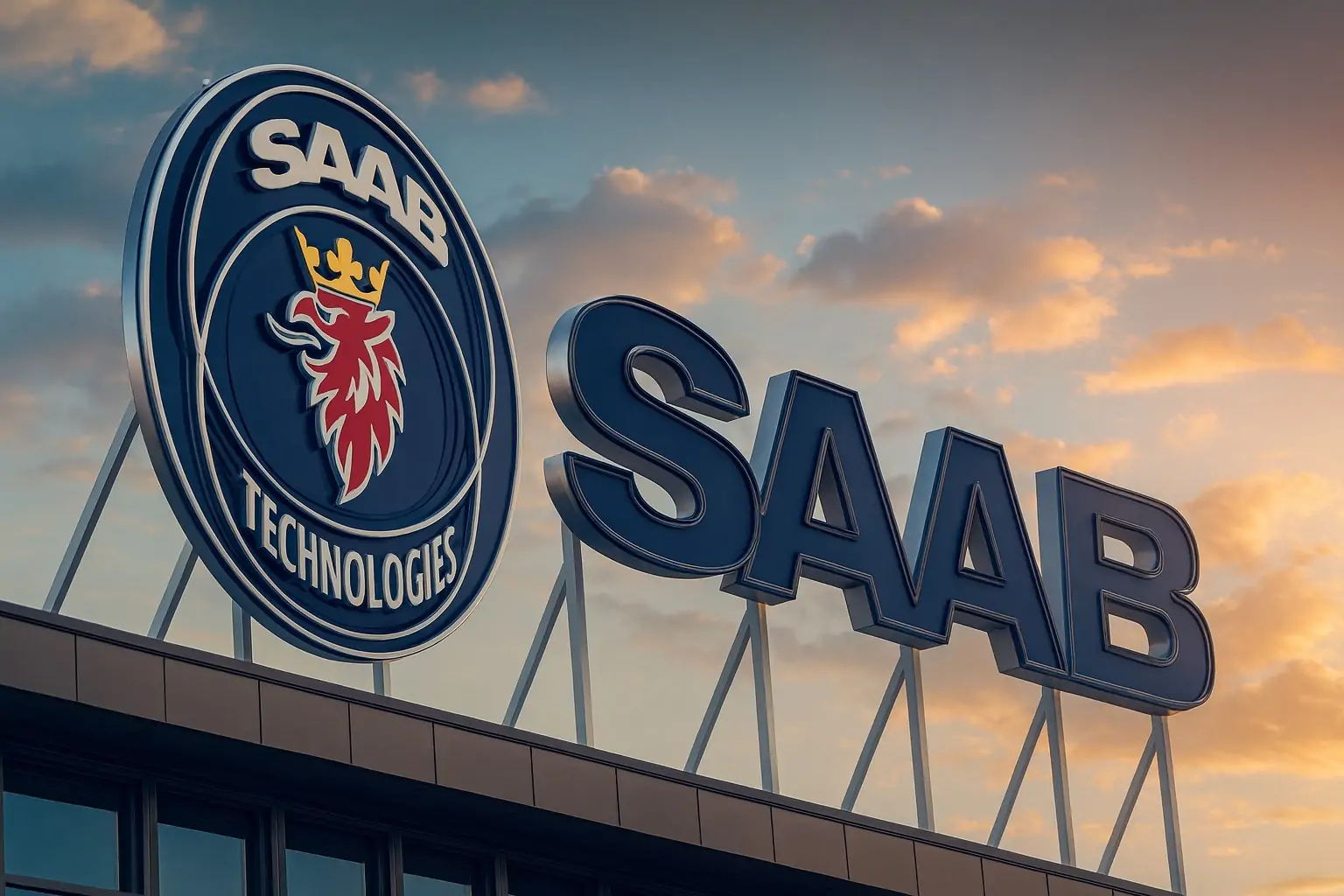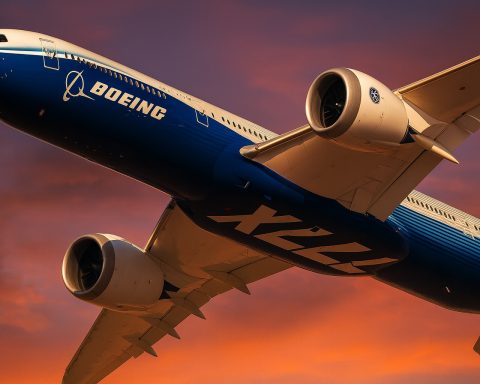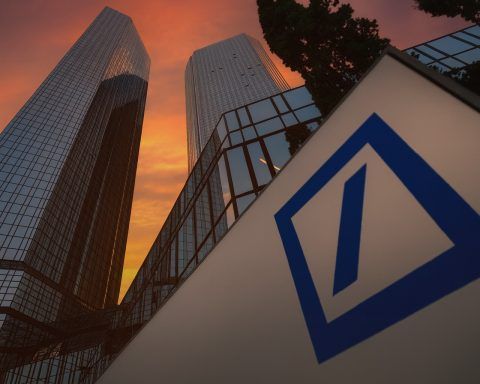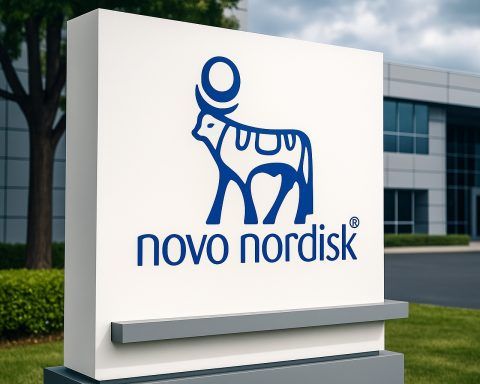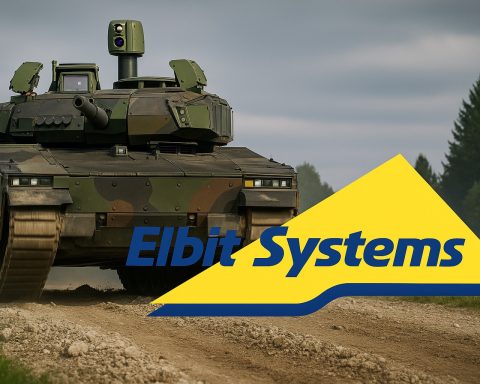Swedish defence and security group Saab AB (publ) (B‑share ticker SAAB‑B.ST) is firmly in the spotlight today after a wave of fighter‑jet contracts, electronic‑warfare orders and new technology partnerships pushed the stock sharply higher and sparked fresh debate about valuation and future growth.
By mid‑afternoon on Monday, Saab’s B‑share was trading around SEK 555, up roughly 5–6% on the day and near its 52‑week high, leaving the OMXS30 benchmark in the dust. Year‑to‑date, the share has gained more than 120%, according to Saab’s own investor data and market feeds. [1]
Below is a full rundown of the key Saab developments driving news flow on 17 November 2025, and how they fit into the company’s broader trajectory.
Stock soars while analysts warn on valuation
Swedish market reports this morning highlighted Saab as one of the standout movers in Stockholm trading, with the stock climbing more than 5% in a generally weaker market. A Finwire/MarketScreener wrap noted Saab among the top gainers even as the OMXS30 index slipped around 0.5%. [2]
Two themes are dominating the equity conversation today:
- Order boom and Q4 momentum
SEB, one of Saab’s key Nordic bank counterparts, described Saab’s latest fighter and sensor contracts as a “major order” that should cause Q4 order intake to “soar”, pointing in particular to the German Eurofighter electronic‑warfare deal and the new €3.1bn Colombian Gripen contract. [3] - Valuation starting to look stretched
At the same time, Swedish business magazine Affärsvärlden today reiterated its neutral recommendation on Saab but said the stock now looks “clearly overvalued” following its powerful run in 2024–25. [4]
Those mixed messages come against a backdrop of very strong fundamentals: Saab’s Q2 2025 report showed organic sales growth of 32%, quarterly sales of SEK 19.8bn, and an EBITDA margin of 14.3%, prompting management to raise full‑year 2025 sales guidance to 16–20% organic growth. [5] The 2024 year‑end report put the order backlog at SEK 187bn, up from 153bn a year earlier – a clear sign of multi‑year visibility. [6]
€3.1bn Gripen E/F fighter deal with Colombia: the core driver
The single biggest catalyst behind Saab’s current rally is the Gripen E/F contract with Colombia, officially signed and disclosed on 15 November 2025 and now being dissected by markets and defence media today.
According to Saab’s own regulatory press release and Reuters’ coverage, the Colombian government has ordered 17 Gripen fighters – 15 single‑seat Gripen E and two dual‑seat Gripen F – in a contract valued at €3.1bn (about $3.6bn). Deliveries are scheduled between 2026 and 2032 and include associated weapons, training, support services and spares. [7]
The deal makes Colombia the latest – and, in Latin America, the second after Brazil – to adopt the Gripen platform. Reuters notes that neighbour Brazil already ordered 36 JAS 39 Gripen jets and built an assembly plant in partnership with Saab, a model that could be echoed in Colombia and elsewhere. [8]
Crucially, Saab and Bogotá also signed two offset agreements covering a “comprehensive industrial cooperation package” in areas like aeronautics, cybersecurity, health tech, sustainable energy and water purification. [9] Those offsets are now starting to turn into concrete projects – most notably a planned solar‑cell factory in Colombia (more on that below).
Green offsets: Saab and Midsummer plan solar cell factory in Colombia
One of the new pieces of news dated today, 17 November, is a regulatory release from Swedish thin‑film solar specialist Midsummer, confirming that it has begun detailed negotiations with Saab on the next phase of a solar‑cell factory project in Colombia. [10]
Key points from that release:
- The project is directly tied to Saab’s offset commitments from the Colombian Gripen deal.
- The factory would use Midsummer’s proprietary thin‑film solar technology, with an initial production capacity of 15 MW, expandable to a larger, multi‑stage facility. [11]
- Saab has already placed a first machinery order worth over SEK 143m earlier this year; the new talks are about scaling capacity beyond that first phase. [12]
The move illustrates how modern defence exports increasingly come with civil‑industrial and green‑technology packages, designed both to win political support in the buying country and to align with broader sustainability goals.
For Saab, the Colombian factory could:
- deepens its local footprint beyond defence into renewables and industrial tech,
- support long‑term Gripen sustainment and technology transfer, and
- create an additional revenue stream via equipment sales and possible service contracts.
Germany’s Eurofighter EK to get Saab’s €549m Arexis EW suite
Another major contract that markets are still digesting – and which continues to generate fresh coverage today – is Saab’s Arexis electronic‑warfare (EW) deal for the German Eurofighter fleet.
Saab’s 14 November regulatory release, confirmed by Reuters and defence outlets, states that Airbus Defence and Space has placed two orders worth a combined €549m for the Arexis EW sensor suite to equip Germany’s Eurofighter EK (Elektronischer Kampf) aircraft, with deliveries running from 2025 to 2028. [13]
Arexis will form the core EW system for the dedicated German electronic‑attack variant of the Eurofighter, aimed at suppression of enemy air defences (SEAD) and electronic attack missions. Aviation and industry reports this week highlight:
- advanced digital receiver and jammer capabilities,
- integration with existing Eurofighter avionics, and
- synergy with Saab’s Arexis offerings already developed for the Gripen E and future Eurofighter EK. [14]
For Saab, the contract adds another long‑duration, high‑margin electronics programme on top of its radar and sensor franchises – a key reason analysts expect a sharp step‑up in Q4 2025 order intake. [15]
New AEW&C role for MQ‑9B drones: Saab teams with GA‑ASI
A fresh announcement dated 17 November 2025 from the Dubai Airshow is Saab’s deepening collaboration with General Atomics Aeronautical Systems Inc. (GA‑ASI) on airborne early warning and control (AEW&C) for long‑endurance drones.
According to GA‑ASI’s press release and an in‑depth report from EDR Magazine, Saab and GA‑ASI will demonstrate an AEW&C configuration on the MQ‑9B in the summer of 2026 at GA‑ASI’s Desert Horizon facility in Southern California. [16]
Key elements of the concept:
- A Saab AEW sensor suite – building on technology from its GlobalEye system – mounted on MQ‑9B SkyGuardian/SeaGuardian variants. [17]
- The combination aims to provide persistent, lower‑cost AEW coverage over land or sea, including for navies or air forces that cannot afford large, dedicated AEW&C aircraft. [18]
- GA‑ASI emphasises that the system is intended to detect everything from cruise missiles and drones to fighter and bomber aircraft, with long on‑station endurance and no risk to onboard crew. [19]
This is strategically significant: Saab is effectively porting its high‑end AEW&C technology from manned platforms such as GlobalEye to unmanned systems, expanding its addressable market in both NATO and non‑NATO countries seeking cost‑effective air‑surveillance solutions.
Gripen E completes in‑flight refuelling certification with Embraer KC‑390
Also feeding into Saab’s narrative today is continued coverage of the Gripen E and Embraer KC‑390 Millennium in‑flight refuelling certification flights, completed earlier this month for the Brazilian Air Force (FAB).
Saab’s 14 November release describes the flights as a key milestone in the Gripen–KC‑390 partnership, strengthening the operational integration of Brazil’s primary fighter and tactical transport/fuel tanker platforms. [20]
Australian Defence Magazine’s 17 November write‑up notes that:
- the certification enhances deployment range and mission flexibility for Gripen E,
- it deepens the industrial and operational ties between Saab and Embraer, and
- it demonstrates Saab’s ability to integrate its fighter into a variety of non‑NATO logistics ecosystems. [21]
These capabilities will not go unnoticed by prospective Gripen customers such as Colombia – and potentially Canada.
Canada back in play? Saab eyes Gripen assembly line as Swedish royals visit
A widely‑picked‑up story today from CityNews / The Canadian Press adds a geopolitical dimension to Saab’s week. The article reports on a three‑day state visit to Canada by the Swedish royal family, accompanied by senior Swedish ministers and a large business delegation, including defence companies. [22]
Within that coverage, Saab CEO Micael Johansson is quoted saying the company is in talks with the Canadian government and Bombardier about the possibility of assembling Gripen fighters in Canada, should Ottawa choose the Swedish jet in any future fighter acquisition or re‑opened competition. [23]
Additional context from the article:
- Canada previously chose the F‑35 as its replacement for the CF‑18, but new Prime Minister Mark Carney has ordered a review of the programme, partly in response to U.S. trade tensions. [24]
- Saab’s earlier proposal to Canada included extensive industrial participation, research centres and local sustainment – an offer that could be revived if the review leads to changes in Canada’s fighter plans. [25]
Taken together with the Colombian contract and Brazil’s existing Gripen programme, this signals a clear strategy to use Gripen as a platform for deep industrial partnerships across the Americas.
Insider sale: Dynamics chief trims stake after share surge
Not all news today is about new contracts. One of the more closely watched items on 17 November is an insider transaction by Saab’s long‑serving Dynamics chief, Görgen Johansson.
A Finwire/MarketScreener report, backed up by Swedish market data, shows that Johansson sold 12,000 Saab B‑shares on 17 November at an average price of SEK 560.21, for total proceeds of just over SEK 6.7m. The sale took place on Nasdaq Stockholm and was reported via Sweden’s Financial Supervisory Authority (Finansinspektionen) insider register. [26]
Despite the sale, Johansson remains a shareholder; earlier filings showed him holding around 30,963 shares as of June. [27]
For investors, the move is a reminder that after a doubling of the share price, some insiders may choose to rebalance or diversify their personal holdings. On its own, one sale does not signal a shift in corporate strategy, but it adds nuance to today’s broader valuation debate.
Fundamental backdrop: high growth, rising backlog, and new domains
While the headlines this week are dominated by fighters, EW suites and AEW drones, they sit on top of a broader multi‑year growth trend:
- Order backlog: Up to SEK 187bn at the end of 2024, from 153bn a year earlier, reflecting a string of orders in air, land, naval and sensor systems. [28]
- Q2 2025 growth: Sales up 32% organically year‑on‑year to SEK 19.8bn, with all business areas growing and Dynamics – where Johansson is business‑area head – posting 73% sales growth in the quarter. [29]
- Outlook: Management guidance currently points to 2025 organic sales growth of 16–20%, with EBIT growth expected to outpace sales and operational cash flow turning positive for the full year. [30]
Newer domains such as autonomous underwater vehicles and Giraffe 1X radars for U.S. and allied C‑UAS missions further diversify Saab’s portfolio, though today’s biggest incremental news is clearly in fighter and AEW/EW programmes. [31]
What today’s Saab news means for investors and industry
For investors and industry observers, the combined impact of today’s news flow looks like this:
- Positive drivers
- A multi‑billion‑euro fighter order in Colombia and a €549m EW suite programme for Germany significantly extend Saab’s revenue visibility into the 2030s. [32]
- The Midsummer solar‑factory project demonstrates Saab’s ability to transform defence offsets into long‑term industrial and green‑tech partnerships. [33]
- The MQ‑9B AEW&C initiative with GA‑ASI positions Saab at the heart of a future market for unmanned early‑warning platforms, a logical extension of its GlobalEye leadership. [34]
- Risks and constraints
- Valuation risk is now front‑and‑centre, with Affärsvärlden openly labelling the stock as “clearly overvalued” even while keeping a neutral stance. [35]
- Large, long‑term defence contracts carry execution and political risk – including budget cycles, export‑control sensitivities, and potential changes in Colombia’s or Germany’s defence priorities. [36]
- Insider selling, such as Johansson’s SEK 6.7m disposal today, may heighten sensitivity to any future negative surprises, even if there is no evidence of strategic disagreement. [37]
For now, however, markets are clearly focusing on the order momentum and technology roadmap, and Saab AB (SAAB‑B.ST) remains one of Europe’s most closely watched defence names.
Note: This article compiles publicly available information from Saab AB, Reuters, Finwire/MarketScreener, defence trade media and regulatory press releases as of 17 November 2025. It is for informational purposes only and does not constitute investment advice.
References
1. www.saab.com, 2. www.marketscreener.com, 3. uk.marketscreener.com, 4. www.marketscreener.com, 5. www.saab.com, 6. www.saab.com, 7. www.saab.com, 8. www.reuters.com, 9. www.saab.com, 10. www.inderes.fi, 11. www.inderes.fi, 12. www.inderes.fi, 13. www.saab.com, 14. www.saab.com, 15. uk.marketscreener.com, 16. www.edrmagazine.eu, 17. www.edrmagazine.eu, 18. www.edrmagazine.eu, 19. www.edrmagazine.eu, 20. www.saab.com, 21. www.australiandefence.com.au, 22. toronto.citynews.ca, 23. toronto.citynews.ca, 24. toronto.citynews.ca, 25. toronto.citynews.ca, 26. www.marketscreener.com, 27. www.marketscreener.com, 28. www.saab.com, 29. www.saab.com, 30. www.saab.com, 31. www.saab.com, 32. www.saab.com, 33. www.inderes.fi, 34. www.edrmagazine.eu, 35. www.marketscreener.com, 36. www.reuters.com, 37. www.marketscreener.com
